Pereskia: types and care at home

Nowadays, many people grow various types of plants in their homes and gardens. Often, a pereskia flower is planted in their plots. Today we will talk about what varieties exist and how to properly care for it.
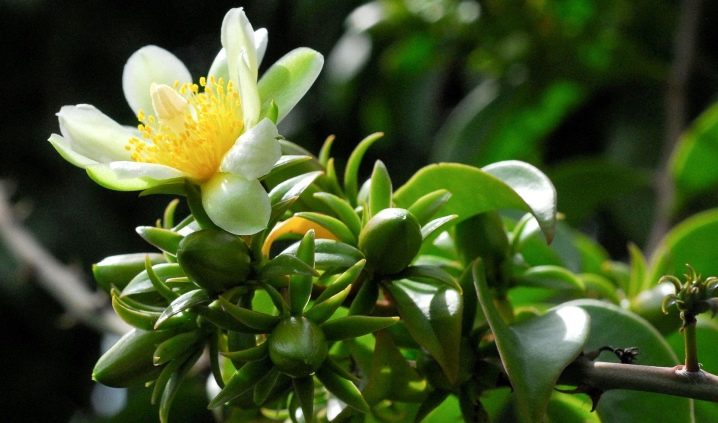
Peculiarities
Pereskia is the oldest leaf cactus species. Her homeland is Central and South America. The culture grows in the tropics and looks like either a large shrub or a low tree.
- Variegated crossover has strong, straight stems with spines. Sometimes creeping branches form on them. They are covered with thorns, which can be located either one by one, or in small groups, and reduced leaf blades.
- Oval leaves covered with a light shiny substance. Their color is dark green. In winter, at temperatures below +10 degrees, the leaf blades of such a plant can fall off. With the age of the flower, its leaves begin to lose their bright color, become paler. Also, during this period, they can fall off in too dry climates.
- The flowers of the plant are large. Most often they develop in inflorescences, although single buds are also found. The color is white, but at the same time you can often see a slight shade of red, yellow or orange on them.
- Ripe fruits of this flower are large spherical berries. They are yellow in color and have a smooth surface. These fruits are edible, and their aroma resembles the smell of pineapple. They ripen after flowering.
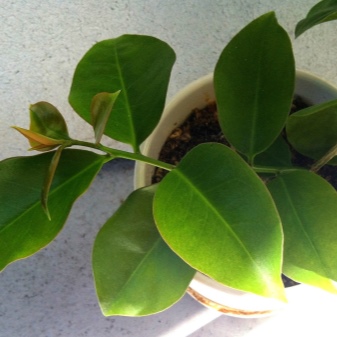

Varieties
Today there are different types of this plant:
- pereski Godseff;
- prickly (shark);
- orange;
- pereskia Grandiflora (large-flowered);
- Pereski Weber;
- peresky sucrose;
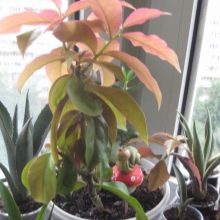
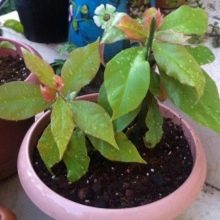
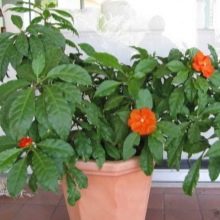

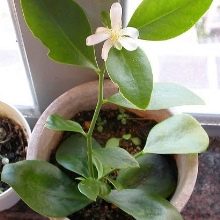
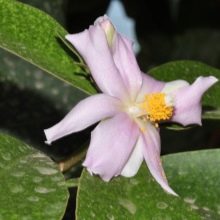
Pereskia Godseff
This variety can be up to two meters in length. She has an erect, thin stem. It has elongated black spines. Small white flowers. The leaf blades are narrow, their length can reach 6 centimeters. They are elliptical in shape.
The top is tinted golden, while the bottom is either red or purple.

Spiny (shark)
It is a liana-like leafy cactus. Its stems are woody. The shoots of such a flower are creeping, they can cling to with the help of thorns. The spines of the prickly variety are straight, the length can reach 2-3 centimeters. Leaves are dense and fleshy, their length is about 7-10 centimeters. The upper part of the leaf plates is green, the lower part is red. The flowers are either pink or white. They have a pungent lemon scent. The fruits are yellow berries, no more than 2 centimeters in diameter.
Such fruits are edible, their taste is sweet and sour.
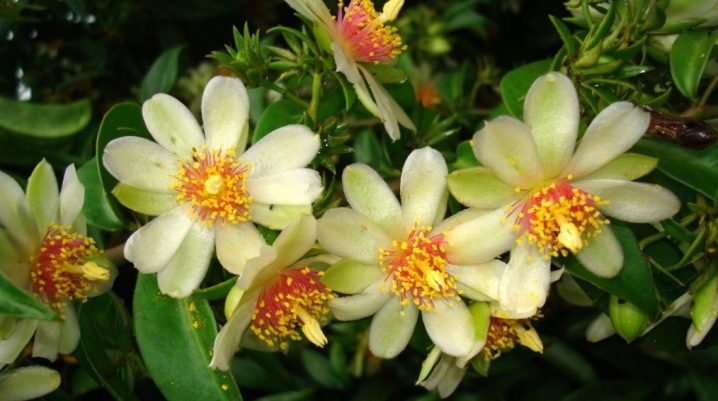
Orange
This type of pereski can grow up to 8 meters in length. The stems are covered with olive bark, their diameter can be 10-15 centimeters. The leaf blades are large and have distinct veins. Leaves grow on long petioles. The flowers grow bright orange in color, no more than 4-6 centimeters in diameter. The fruits of this species are cone-shaped, have a pineapple aroma, but they cannot be used as food. It is believed that it is this variety that can be used for the manufacture of medicines. After all, it is able to reduce pressure, blood sugar levels.

Pereskia Grandiflora (large-flowered)
Its length can be up to 5 meters. The stems of such a plant are covered with thorns.The stem itself is chestnut in color, has a rough surface. The leaf blades are elongated, 20-23 centimeters long. They crumble at a temperature of +10. The buds of such a flower are large. Their color is deep pink. As a rule, they grow in inflorescences of 10-20 pieces, but flowers can also grow one at a time.
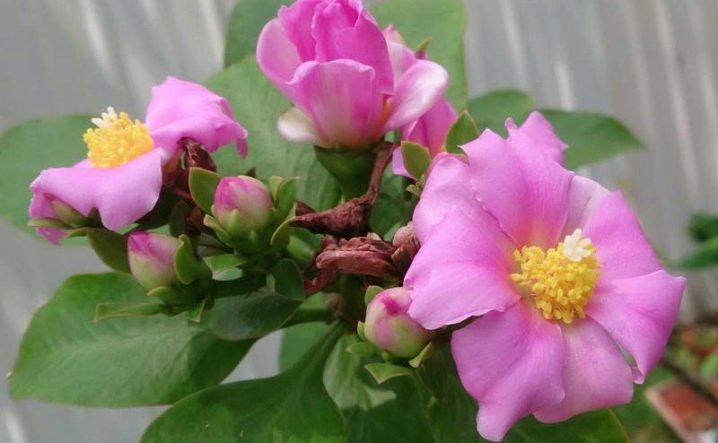
Pereskia Weber
It is a shrub 1 to 3 meters long. Their root system is thickened. The leaf blades are small in size, they are attached to the flower without cuttings.
This species is distinguished by abundant and long flowering, which lasts from spring to summer.
The flowers are small, pink in color. Their diameter is about 2 centimeters.
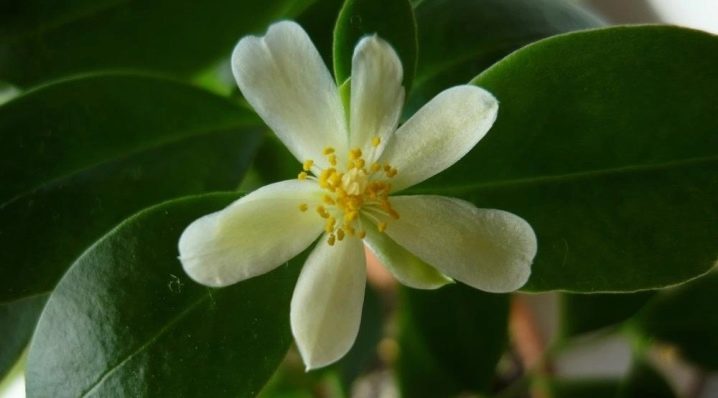
Pereskium sucrose
It can be up to 7 meters long. Shoots grow in an unusual curved shape. The leaves are long, reaching 10 centimeters. On such a plant, you can find thorns 2-4 centimeters. The buds of this variety are larger than other species, their diameter is more than 6 centimeters. Their color is pink.
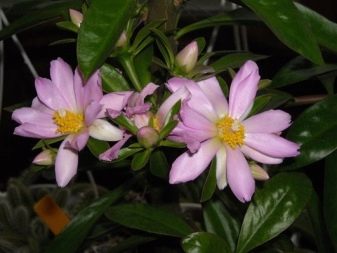

Conditions of detention
If you want to grow pereskia at home, then you should follow some rules. Otherwise, such a plant will not be able to grow and develop normally.
Lighting
Pereskia is a light-loving plant. But at the same time, too much solar radiation can harm it, therefore in the summertime the window, next to which the flower stands, must be covered with a net. The best places to grow this plant are the southern windows.
Due to a lack of lighting, the stems can stretch out a lot, and the leaf blades become too small, their color begins to fade.
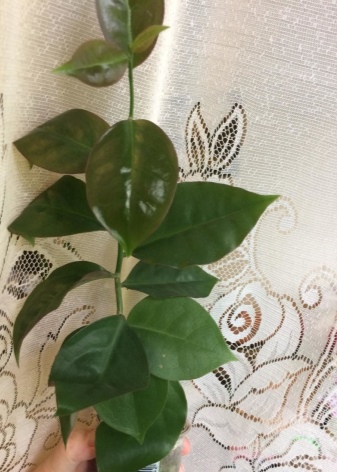
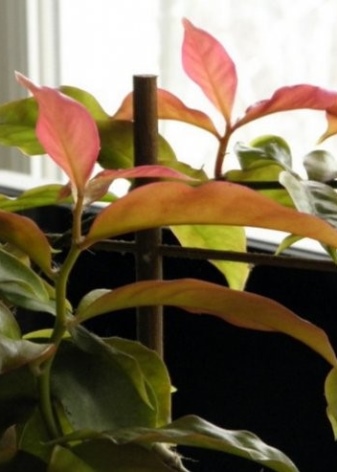
Temperature and humidity
The optimum temperature in the summer for such a plant is 22-23 degrees Celsius. Moreover, it is important that the pereski receives a sufficient amount of air. In the fall, the flower can be kept at a temperature of 15 degrees. In winter, the temperature regime can be reduced to 12. The room in which the plant is located must be constantly ventilated so that sunburns do not appear on it. Pereskia can tolerate even too dry air. But the leaf blades of the flower grow beautiful and shiny only with regular spraying with clean water. Pereskiy is not afraid of drafts. It can be taken out on the balcony or in the garden in the summer. But at the same time, it is imperative to ensure that the plant is protected from rain.
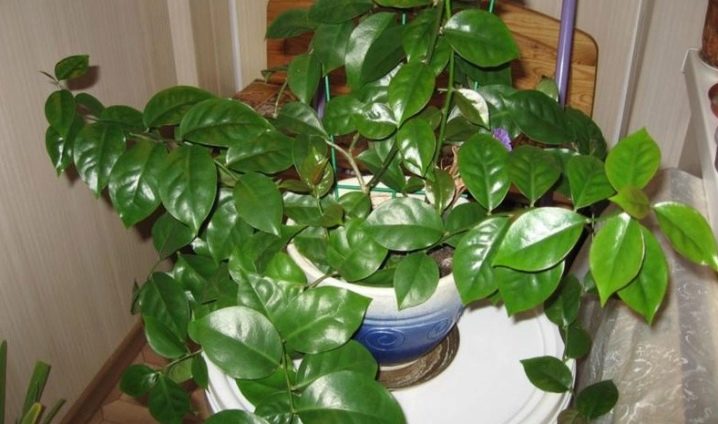
Priming
To grow a flower, you should use the most fertile and loose soil. Moreover, it is recommended to add humus to it.
Most often, a mixture of several types of soil is made for pereski: sand, humus, leaf and clay-sod soil.
Transfer
It is necessary to transplant adult plants no more than once every 2-3 years. This is done if the root system has completely filled the pot. Young flowers are transplanted as they grow.
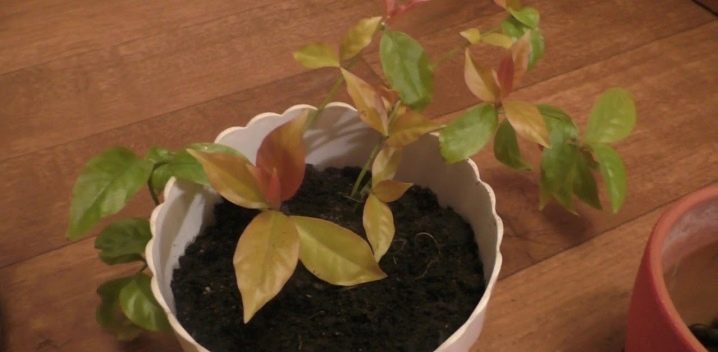
For transplanting a plant, you can use either ready-made soil, which can be purchased at a specialized store, or you can prepare it yourself at home.
- To prepare the soil yourself, you need to mix turf, leafy soil and humus in equal proportions in one container. Then sand is added (2 times less than other components).
- Transplant pots should be large.
- Drainage is laid out at the bottom of the pot. After that, pre-prepared soil is poured there.
- After transplanting, the plant should begin to grow rapidly.
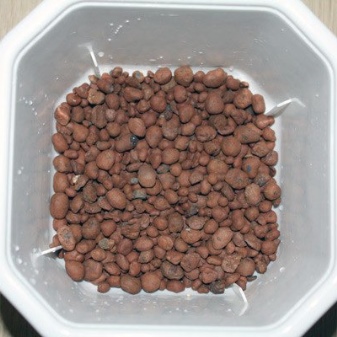

Care
In order for the pereskia to grow healthy, you need to periodically carry out procedures to care for it. So, it is necessary to carry out periodic watering, fertilize and fertilize.
Watering
Pereskia can grow and develop normally even with low humidity levels in the pot. But at the same time, in order for the plant to be healthy and beautiful, it should be sprayed with clean, settled water.In summer and spring, watering is carried out when the upper part of the soil dries up in a container with a flower.
In winter and autumn, the number of such procedures can be reduced to once a month.

Top dressing
Pereskia is especially in need of fertilization in the spring. To do this, you should use special feeding for cacti, which are sold in specialized stores. It is recommended to introduce them once every 15 days under the root. It is also worth diluting the product twice as much as written in the instructions. Fertilizers are not used in autumn and summer. It should be remembered that such a flower does not like nitrogen-containing substances, therefore, it is generally better not to introduce organic matter into the soil. Otherwise, rot may form in the root system. Pereskia needs fertilization during the growing season and flowering. Moreover, the introduction of dressings is carried out along with watering. Typically, use only half of the fertilizer at a time.
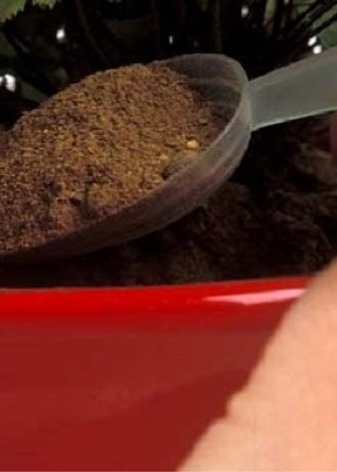
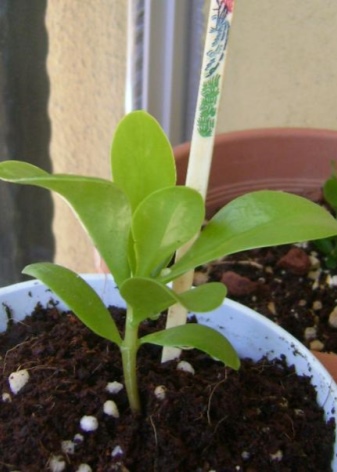
Diseases and pests
Pereskia can be affected by spider mites. In this case, a thin web will form on the lower part of the leaf blades. At the same time, small dots can be seen on the upper part of the leaves. Due to such a parasite, the flower will lose its bright color and become pale. As a rule, a spider mite appears on a flower when the air is too dry in the room where the pereski is located, so it is recommended to moisturize the plant regularly. You should periodically wipe the leaves with a damp cloth to remove dust from them, as well as destroy any fallen leaf blades.
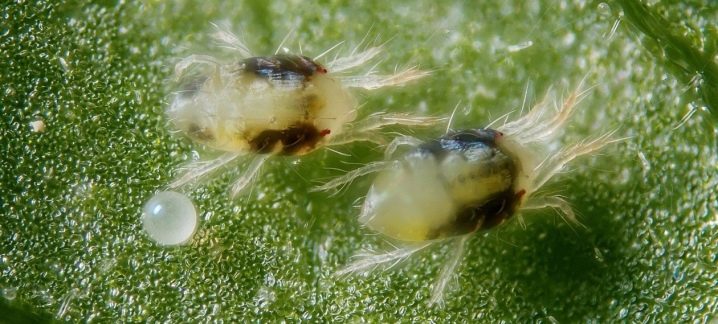
This plant can also be affected by the cactus scale. It is a small yellow or orange insect, the diameter of which does not exceed 2 millimeters. The parasite destroys the top of the leaves. After the appearance of the scabbard, yellow spots are formed on the plates. Over time, the foliage begins to fall off. In this case, you need to prepare a light soapy solution and carefully wipe the leaves and stems of the plant with a cloth soaked in it.
In case of severe damage, it is better to use chemicals immediately.
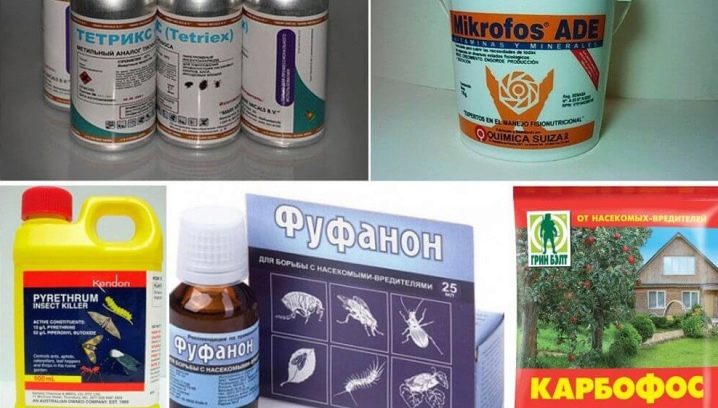
Mealybugs can also infect pereskia. This parasite grows no more than 3-4 millimeters in size. The largest accumulations of the pest can be seen on young shoots. The mealybug in the process of its activity releases a large amount of sticky liquid, which completely pollutes the plant. At the same time, a cobweb bloom appears on the leaf blades, the flowers fall off, and the shoots and new leaves are significantly deformed. To get rid of the pest, first the flower is treated with a soap-alcohol solution. Then it is rubbed with a garlic mixture or liquid with calendula. This should be done three times with an interval of one week.
Improper care can be the cause of a flower's disease.

So, with excessive waterlogging of the soil, rotting of the root system can occur. In this case, the plant must be immediately transplanted into a new container with different soil. If the soil is waterlogged, gray rot may appear. The stems will start to mold and become too soft. To cure a plant, you need to reduce the amount of watering, lower the level of humidity, treat it with chemicals.
The plant can also get sick when the soil dries out. In this case, the pereskia becomes weak and lethargic, and its leaf blades begin to fall off over time.

Reproduction
Pereskia propagates by seeds or cuttings.
- In the first case, a box with a mixture of peat and sand is prepared in advance. Sowing should be done in early spring. Seeds need to be watered regularly. They also need to be covered with a thin film. Shoots can be seen in 3-4 weeks.
- For rooting by cuttings, stronger branches are taken. The procedure can be carried out either in the spring or at the beginning of summer. First, the cuttings are cut with a blade, after which they are placed in a box with a mixture of perlite and peat. All this is covered with a film on top.After a few weeks, small roots appear on the cuttings. They will already be able to grow and develop without a film.
When planting, it is worth handling the plant as carefully as possible, because the root system is not yet strong, it can be easily damaged.

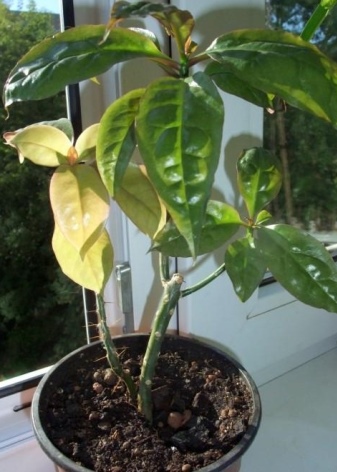
How to properly transplant pereskii cuttings, see the video below.























































The comment was sent successfully.